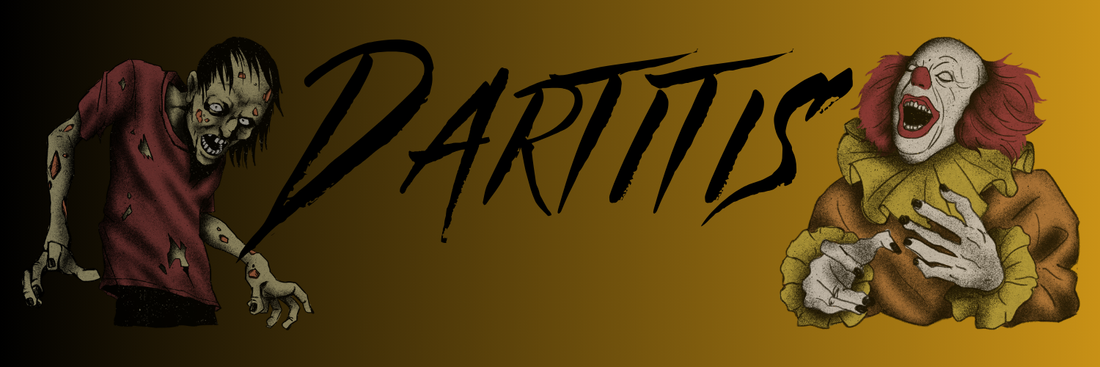
Dartitis: What is it and why does it happen?
Share
Few sports combine precision, mental strength, and fluid technique like darts. Yet hidden within the rhythmic hum of the oche is an elusive foe that has sidelined even the most seasoned players: dartitis. This mysterious condition—often likened to the "yips" known in golf and baseball—poses both physical and psychological challenges to those who experience it.
At its core, dartitis manifests as a sudden inability to execute a smooth release of the dart. A player who once threw with confidence now finds their arm freezing, their wrist clenching, and the dart seemingly stuck in place just when it counts the most. Though the symptoms are physical—a hesitation that disrupts an otherwise fluid motion—the roots of dartitis are far more complex and often steeped in psychological factors.
The Psychological Battle
Dartitis is not just a mechanical malfunction; it is a mental battle. Pressure, past failures, and self-imposed expectations can trigger a cascade of doubts that disrupt a player’s muscle memory. In moments of high tension, the mind may overanalyze every nuance of the throwing motion, paralyzing the body's natural rhythm. Players who experience this report a sensation akin to being trapped in slow motion, where the intended movement becomes a frozen display of self-doubt.
This challenge reminds us that sports performance is never purely physical. The internal dialogue—a mix of confidence and anxiety—can be the decisive factor that tips the scales between success and struggle. Recognizing this delicate interplay is the first step in understanding and ultimately overcoming dartitis.
The Science Behind the Struggle
While research on dartitis is still in its early stages, some experts draw parallels with focal dystonia—a neurological condition that impairs fine motor control in repetitive tasks. However, unlike dystonia, dartitis often appears as a situational and sometimes temporary phenomenon, giving hope that with the right approach, the condition can be unraveled.
The ambiguity of dartitis leaves room for both physical and psychological intervention. It serves as a powerful reminder: to excel in precision sports, one must train the body and nurture the mind.
Stories from the Oche
Countless professional darts players have encountered dartitis at some point in their careers. Their experiences paint a picture of resilience and reinvention. Some have adapted their techniques—experimenting with new grips, stances, or release patterns—while others have sought the help of sports psychologists to break the cyclical nature of performance anxiety. Every story of overcoming dartitis is a testament to the power of persistence, adaptation, and the willingness to embrace both physical and mental coaching.
Strategies to Overcome Dartitis
Coping with dartitis involves a holistic approach that addresses both the mental blocks and mechanical habits that contribute to the condition. Below are several strategies, each accompanied by practical tips and insights to help darts players regain confidence and fluidity on the oche.
1. Mindfulness and Relaxation Techniques
A significant component of dartitis is the mental pressure that triggers overthinking. To counteract this:
- Deep Breathing & Progressive Muscle Relaxation: Practice slow, deliberate breathing exercises before shots. Inhale for a count of four, hold, and exhale slowly. Complement this with progressive muscle relaxation, where you tense and then release different muscle groups to ease physical tension.
- Mindfulness Meditation: Regular meditation sessions help quiet the mind. Even short daily sessions can reduce the anxiety that often disrupts muscle memory. Apps or guided meditations can be great starting points.
- Mental Rehearsal: Visualize a perfect throw in detail. Picture every phase of the release and flight. This mental imagery reinforces neural pathways, allowing your body to "remember" the correct movement even when doubts creep in.
2. Cognitive Behavioral Techniques and Psychological Interventions
Dartitis is as much a mental challenge as it is physical. Addressing negative self-talk and performance anxiety head-on can restore confidence:
- Cognitive Restructuring: Work to replace thoughts like "I’m going to mess up this throw" with objective, positive statements such as "I have practiced this shot countless times." This reframe can help break the feedback loop of self-doubt.
- Behavioral Experimentation: Set up low-stakes practice scenarios where the focus is solely on technique rather than scores. By removing the pressure, you allow yourself room to experiment and rebuild trust in your ability.
- Working with a Sports Psychologist: A psychologist can offer personalized strategies like Cognitive Behavioral Therapy (CBT) or acceptance-based approaches. They help tailor interventions that suit your individual triggers and stress responses.
3. Technique Modifications and Physical Drills
Sometimes, a subtle change in the physical approach can be the key to breaking free from dartitis:
- Grip and Stance Adjustments: Experiment with changing your grip slightly or adjusting your stance. Small modifications can help reset your motor routine. Consider working with a coach or using video analysis to pinpoint any mechanical hesitations.
- Slow-Motion Repetition: Practice your throwing motion in slow motion. This focused repetition can help engrain the correct sequence into your muscle memory without the rush of a competitive environment.
- Routine Reinforcement: Develop a pre-throw routine that you perform consistently. This might involve a specific number of practice swings, a visual target focus technique, or even a mantra that calms your nerves and centers your attention.
4. Creating Low-Pressure Practice Environments
Rebuilding confidence in your throwing ability benefits immensely from reducing performance pressure during training sessions:
- Non-Competitive Drills: Schedule practice sessions without any emphasis on scoring. This environment allows you to experiment, make mistakes, and learn without the added anxiety of competition.
- Gradual Exposure: Slowly reintroduce competitive elements only once you feel more comfortable with your technique. This step-by-step exposure helps bridge the gap between practice and match conditions without overwhelming your system.
- Feedback and Celebrating Small Wins: Keep a practice log and note small improvements. Celebrate incremental progress—even if it’s just holding the dart the way you want or a smoother release. Positive reinforcement is key to breaking the cycle of self-doubt.
5. Additional Considerations
- Journaling: Maintain a training journal where you reflect on what worked and what didn’t each session. This can help identify patterns and track progress over time.
- Peer and Community Support: Connect with other darts players who have encountered similar challenges. Sharing experiences and strategies in a supportive environment can offer new insights and foster a sense of camaraderie.
- Physical Conditioning: Sometimes, overall physical stress—like fatigue or muscle tightness—can exacerbate dartitis. Incorporate stretches and even light resistance exercises to keep your muscles relaxed and in control.
